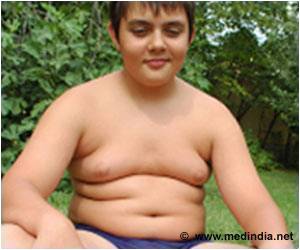
The researchers investigated the association between urban factors that the children were exposed to between October 2017 and January 2019 (ambient air pollution, green spaces, built environment, density of unhealthy food establishments, road traffic and road traffic noise) and various measures of childhood obesity (body mass index, waist circumference and body fat) and weight-related behaviours (fast food and sugar-sweetened beverage consumption, physical activity, sedentary behaviour, sleep duration and well-being).
‘There is an association between the urban environment and the level of physical activity, sedentary behaviour and other weight-related behaviours in children.’
Read More..
To date, few studies have assessed whether the urban environment influences children’s behaviours in order to better understand the relationship between this environment and the risk of childhood obesity.
An understanding of the mechanisms of this relationship will facilitate the development of community-level health promotion programmes to encourage healthier behaviours in the city. Another novel aspect of this study is that it assessed multiple urban exposures together, in accordance with the concept of exposome or the study of multiple simultaneous environmental factors.
Possible Mechanisms
“Higher levels of air pollution, traffic and noise were associated with higher body mass index and a higher likelihood of the child being overweight or obese,” explained lead author Jeroen de Bont, a researcher at ISGlobal and IDIAP Jordi Gol. Although the mechanisms that could explain this association remain unknown, the scientific team proposed various hypotheses.
Air pollution could disrupt the molecular mechanisms that cause obesity by inducing inflammation or oxidative stress, hormone disruption and visceral adiposity (although the studies published to date have been performed in mice). Noise could influence sleep deprivation and increase stress hormones, which are associated with physical development in childhood and could increase the risk of becoming overweight.
The findings were consistent with those obtained in the same study when some environmental exposures were analysed separately. In particular, the number of unhealthy food establishments in an area was also found to be associated with childhood obesity, probably because such an environment may favour higher fast food consumption and higher caloric intake.
READ RELATED: Australia WON'T withdraw funding from the World Health Organisation
The study did not, however, find an association between the urban environment and the level of physical activity, sedentary behaviour and other weight-related behaviours in children, although it is thought that such factors could play a role.
The fact that the study did not find an association between these factors could be attributed to “the difficulty of determining to what extent obesity itself influences weight-related behaviours,” explained de Bont.
Moreover, information on children’s physical activity was collected using a questionnaire that did not take into account where the activities took place. “We were able to find out if the children played basketball or football, but not if they cycled in nearby green spaces, for example,” he added.
Finally, “socioeconomic status plays an important role in the association between the urban environment and childhood obesity that is not yet clear,” commented last author Martine Vrijheid, a researcher at ISGlobal.
In this study, children living in more deprived areas on the outskirts of the city had higher rates of overweight and obesity even though they were exposed to lower levels of air pollution, road traffic and noise and had access to more green spaces. Further research is needed to shed light on this issue.
Source: Eurekalert
Source:







